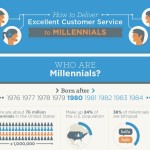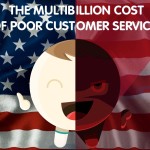Each time a consumer buys goods or service, he uses the decision process. It may be used consciously or unconsciously. The consumer may use extended, limited or routine decision making depending upon the degree of search, level of prior experience, frequency of purchase, amount of perceived risk and time pressure.
- Extended consumer decision making
- Limited consumer decision making
- Routine consumer decision making
1. Extended Consumer Decision-Making: Here, the considerable time is spent on information search and evaluation of alternatives. Expensive, complex items with which the consumer had little or no experience require this form of decision making. Perceived risks are usually high and purchase is quite important. Purchases are made quite infrequently. The consumer devotes a lot of time in making these purchases and delay in decision making is there. This type of decision-making is usually required when choosing a college, a wedding or consumer durable items etc.
Marketers of high-involvement products must understand the importance of information in the involvement of consumers. They need to help buyers learn about product-class attributes and their relative importance, and about what the company’s brand offers in terms of important attributes. Marketers need to differentiate their brand’s features. They must motivate salespeople and the buyers’ acquaintances to influence the final brand choice.
2. Limited Consumer Decision-Making: It is used for items purchased infrequently. The customer has previously purchased the product but the purchase is not frequent. All the considering factors are moderate. The emphasis is usually on evaluating a list of known alternatives. A second hand car, furniture and a vacation are examples of items falling in this category.
The marketer’s task in a situation where he is introducing a new brand in a well known existing product category is to design a communication strategy that gives complete information on all the attributes of the brand and its special edge over the existing brands. Such action would increase the consumer’s confidence and also facilitate their purchase decision.
3. Routine Consumer Decision-Making: When the consumer buying out of habit, the consumer seeks to spend as little time as possible in shopping and often repurchases the same brand. This type of decision-making is used for regularly purchased items. These goods and services are bought regularly and as a result have little or no perceived risk. They are relatively low in price. The time pressure to buy is high. Examples of such items are daily newspaper, hair cut, weekly household items etc.
Marketers dealing in products involving routine response behavior must ensure satisfaction of existing customers by maintaining consistent quality, service, and value. Also, they must attempt to attract new customers by introducing novel features, using point-of purchase promotional material and special displays.
Learn more about different decision making processes used by customers only at the University Canada West, one of the best universities in Canada, offering various business and management related programs.
Tim Scott
Latest posts by Tim Scott (see all)
- Data Science and Its’ World Changing Influence - May 30, 2017
- The Perceived Role of HRM in Creating a Successful Organization - February 1, 2017
- Things To Know About VAT In UK - November 18, 2016
















